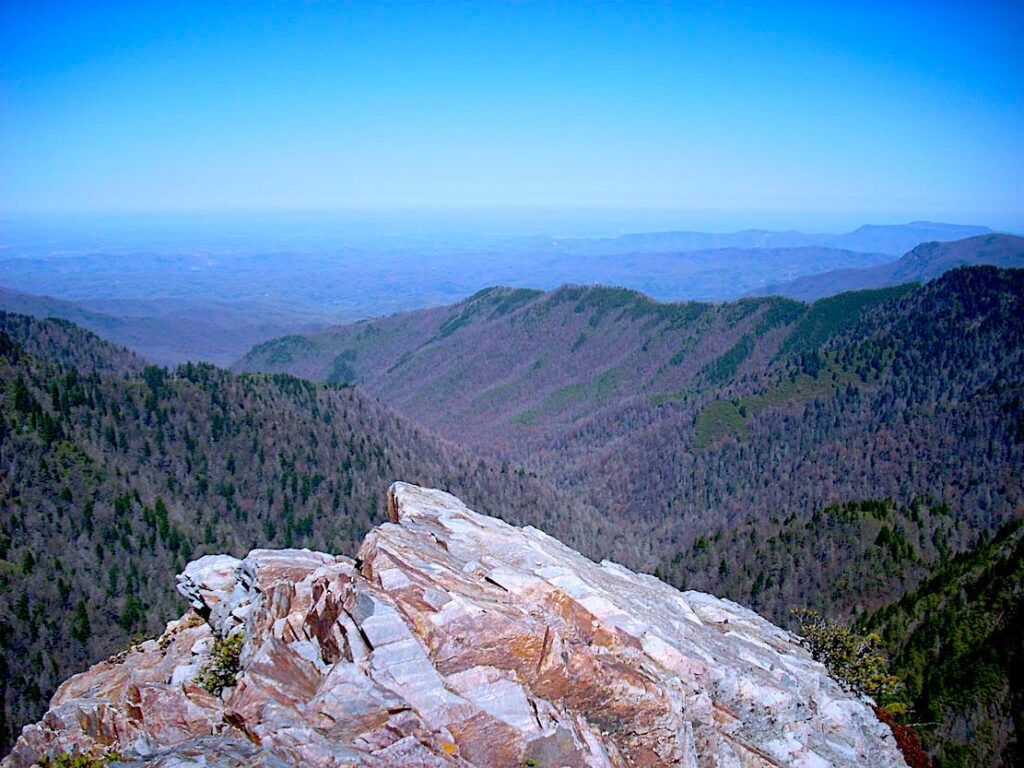After a long day hiking in the rain, I passed the side trail to “Charlies Bunion,” a scenic rocky overlook that attracts many view-seeking hikers. Typically, many day-hikers are headed up to this iconic and particularly stunning Smokies feature on the weekends. One is rewarded with epic photo opportunities of long-range mountain views if you can successfully choose a clear day to go.
I passed a young hiker wearing jeans and a heavy cotton sweatshirt carrying nothing but a small bottle of water in his hand. I asked him a few questions, knowing he was approximately 3.5 miles from the trailhead. It was late in the day, raining continuously and already quite cold out, with temperatures beginning to drop. I was wearing full rain gear and already struggling to stay warm after a full day of wind and rain.
As an Appalachian Trail Ridgerunner, I have no authority to “make” anyone turn around, but I do my best to provide objective information and knowledgeable guidance. He had no supplies or rain gear, and he already seemed soaked. There certainly wasn’t a view to be had that day, yet he insisted on continuing to his destination, as he was “so close.” I wondered if I might get a call later about a potential rescue victim suffering from hypothermia… This experience left me concerned and questioning if I had done enough to help him understand his potential predicament.
Having had a personal experience lately with mild hypothermia, I decided to update the Hypothermia entry in my upcoming book about Backpacking as a Sacred Practice and share it in this post. It features a detailed first aid section that speaks to many of the most common ailments a backpacker might potentially experience.
SO, WHAT IS HYPOTHERMIA, ANYWAY?
Hypothermia is a potentially life-threatening medical condition that occurs when the body loses heat more quickly than it can produce it, resulting in a dangerously low core temperature. Hypothermia occurs when there is a drop in core temperature by several degrees or more. Cold sickness can arise in surprisingly high temperatures, even 60°F, in windy, wet conditions. Wearing appropriate clothing layers, staying dry, and shielding against wind and damp conditions are paramount. The severity is assessed from mild to extreme stages and has a progression of dangerous to life-threatening symptoms.
Uncontrolled shivering, slurred speech, cold skin, and slightly impaired judgment are some of the first signs of mild hypothermia. The remedy is quickly moving the person into a warm, dry environment and removing any wet clothing. Prevention is fundamental, followed by swift action to address early signs, such as seeking shelter. The first treatment is to keep the person from getting colder by using an emergency blanket, sleeping bags, or extra clothing. Hot liquids and food will help elevate the core temperature.
In more advanced stages, the victim is lethargic, disoriented, breathing shallowly, and has an altered mental state. Shivering will cease, and the body’s primary systems will function at a profoundly reduced level. It is imperative to evacuate the person and seek professional medical help immediately.
THREE WAYS THE BODY LOSES HEAT:
There are three significant ways that heat leaves a warm body or object. Radiation refers to the continual release of body heat to the surrounding environment. Convection involves the loss of body heat to moving air or water. Conduction is the transfer of body heat to colder surfaces through direct contact, such as sitting on a cold rock. Wearing adequate insulation and reflective clothing helps retain warmth and prevents heat loss. Proper windproof and waterproof gear will minimize heat dissipation and mitigate the risk of cold-related infirmities.
Are you headed out on the trail this early Spring? Stay warm and dry by packing appropriate layers and gear to ensure a safe and happy hike!
Namaste


